
INTERVIEW WITH CONTEMPORARY MASTER ARTIST LAXMA GOUD
Laxma Goud is a living legend in the art scene in India today — just the mention of his name evokes a lot of awe and respect among artists! Rare is the artist who can work across so many mediums and with so many different materials like he does.
I saw his work for the first time at a clothing store in the city of Secunderabad in India in 2009. It was a black and white painting showing the face of a woman from Telangana. Her face exuded strength and power, and a lot of punch. I was hooked. I just knew I had to track down the artist who made this work. A few days later, I met Laxmaji in his studio, and that was the start of friendship where he introduced me to the finer nuances of the art world, invited me to his etching workshops and gave me lots of books to read by way of ‘homework.’ I am so grateful that he took me under his wings.
What follows is an excerpt of an interview with Laxmaji during my recent trip to India.
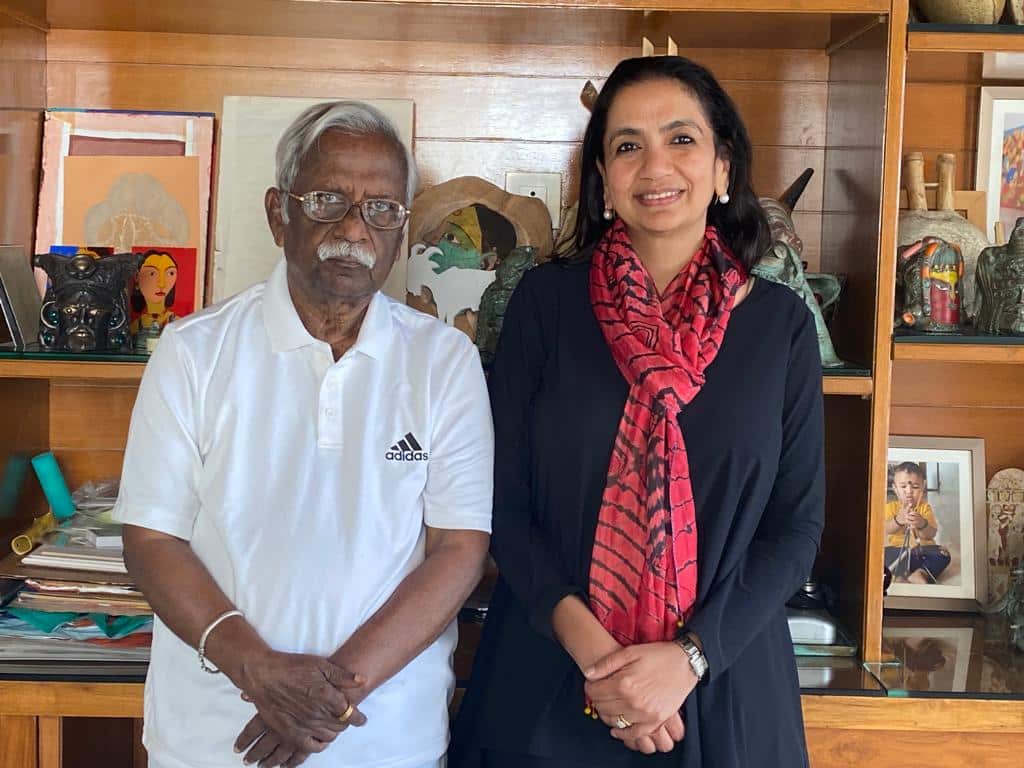
Sonia Patwardhan: Laxmaji, what does art mean to you?
Laxma Goud: There is no different definition to Life and Art — I don’t separate the two. It is as simple as that. It is a preoccupation as far as I am concerned, without which I don’t think I will survive. To me, Art and Life are the same. And it keeps me going. Going every day. It’s very fascinating.
Can you describe your artistic journey from the beginning, specifically focusing on the key turning points?
It’s a long journey. Some of those who had a major role to play are specifically my father, art historian and collector Jagdish Mittal, and artist K.G. Subramanyam.
My Father
To begin with, I would say, one aspect of my growth is the environment where I was born, where my father observed me and took care of me personally. The other is when I came out of my high school, as my grades were so low and my friends told me it would be very difficult for me to get entry into any professional study. Then someone told my father that there is an art school in Hyderabad, so he lovingly took me to that place, an old dilapidated building. I could hardly write anything in English, so they filled in the admission forms for me and I only signed. And I think after entering that signature, it was a thrilling experience. I entered into a new world altogether.
To my pleasant surprise, whenever I went back to my village on vacations, I used to quickly sketch the animals and the landscape, not with much detail but a single stroke with conte crayon. I could draw a pig, a cow, a buffalo, a goat and things like that. My father would watch and admire me and think how a guy like me from a village, from his house, his family, could look at something and draw it.
Jagdish Mittal
When I came back to art school after vacations, I used to display these drawings in my classrooms. At that time, Jagdish Mittal (who is today a well-known collector of Indian art) was our part-time lecturer in Art History. One day, he saw all my drawings lined up on the walls, and he asked the teachers whose work this is. He said to me, I have picked 25 drawings, can you give them to me tomorrow? I thought, what is he going to do with them? Anyway, I gave them to him and the next morning, I got some 250 rupees or so in an envelope! He told me that these works of mine were given to the well known art collector, Badri Vishal Pittie.
Can you imagine, my drawings have been picked up by the great Jagdish Mittal? When I left my village, that is the kind of relationship I walked into, which has given me so much confidence in my own work. This is what happens when you have a good eye, mind and focus, and you learn and learn and learn.
K. G. Subramanyan (Manida)
After 5 years at the art school, I got my diploma. I was picked up by the state academy, and they gave me a fellowship for a year and a half. I chose to go to Baroda. And that’s where I met Manida, also known as K. G. Subramanyan. Well, after training in art school, studying and working with a person like him further cemented a certain amount of intellectual depth to understand what is art. He was commissioned to make a mural on the Gandhi Centenary year at Rajghat in Delhi. It was sand cast, three different units, based on the concept of Gandhi’s life and teachings. Working with him added to my knowledge and my strength working with different materials.
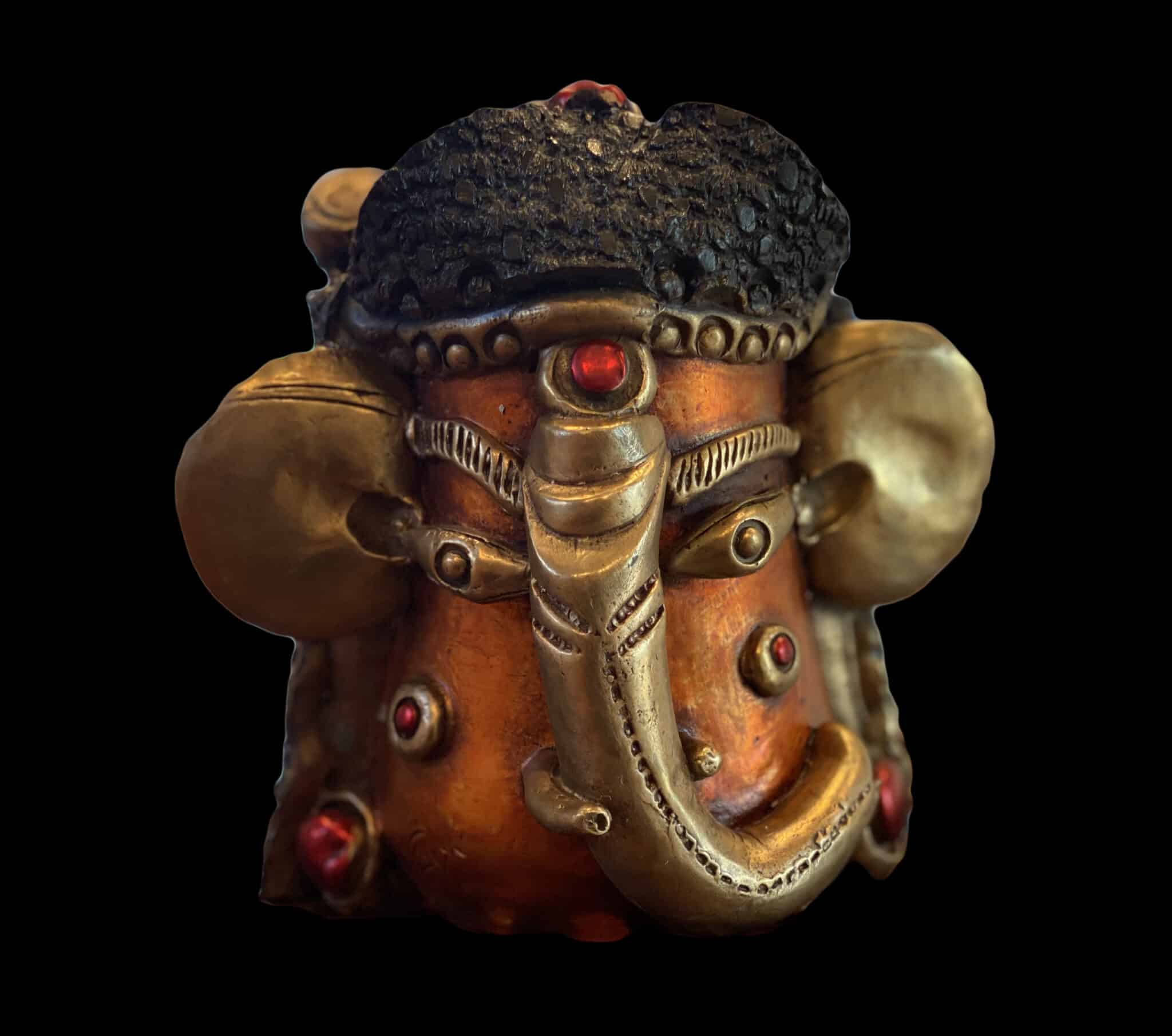
Earning a livelihood as a young artist and supporting one’s family — that’s always a challenge especially when one is fresh from art school. How did you handle that?
When I was married, not settled, my eldest girl was born, and there was no income. So for 30 long years, I worked on a salaried job — 15 years in Doordarshan at a public television station, and 15 years in building up a post graduate school with Central University in Hyderabad. In fact, I was already a successful printmaker then, but then you cannot sell your prints every day! You cannot sell your drawings every day!
For many artists when they are doing these 9 to 5 jobs, there can be a certain deadness since they really want to do something else. But they have to take care of their responsibilities.
Maybe I am very lucky. The jobs I had were all senior jobs. I could dictate my terms to the department where I was working. So, I got a certain kind of freedom. Because I was good at illustration as well, I could make children’s stories, story-boards which were telecast. And while I did a full time job, I continued with my art practice. That is what I mean by focus. I can do anything and everything. You can engage me in anything and I will be there in totality.
What do you think are your 3 most important strengths?
One is my skill. After meeting a teacher like Manida, I became quite articulate. So articulation is important, not for public relations, but as an artist, you have to make your presence and personality felt. And, your work always speaks for you.
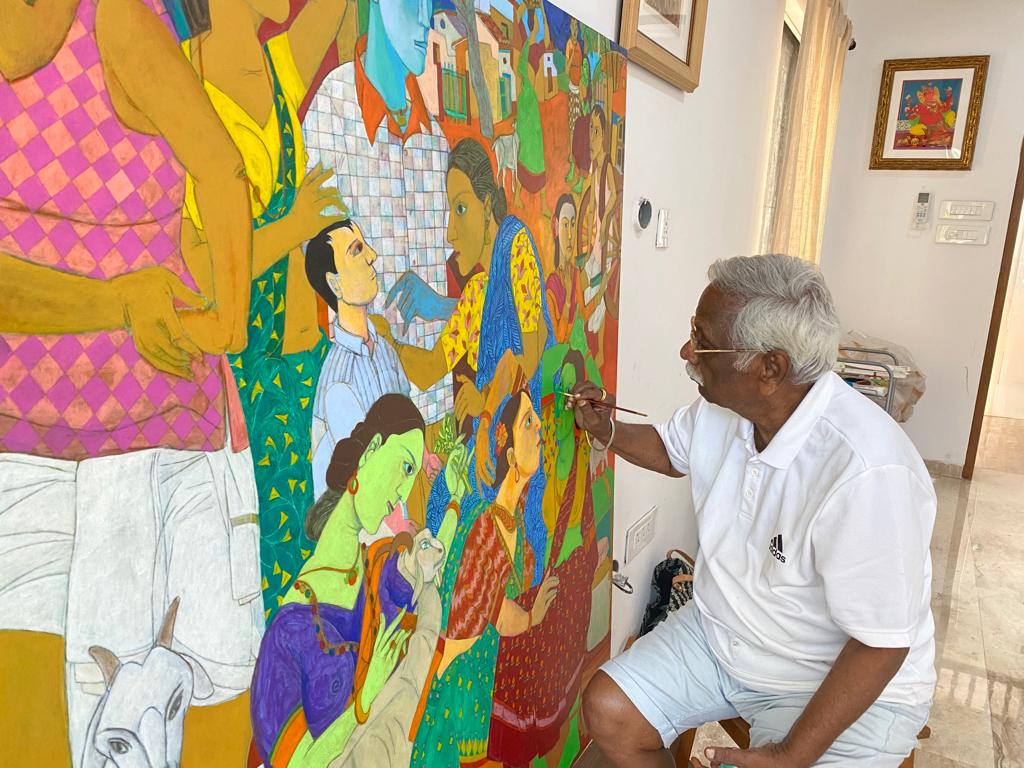
But is there something more that sets you apart?
I can’t think of anything else. You may say, it is luck. There must have been several artists who must have met Mittalji too, but when I was noticed, it was the right time and I was at the right age. These are the kind of things that have happened in my life.
Yours is a life well-lived.
Sonia, it just happened. My meeting with Mittalji, my stay with Manida for one and a half years was such a meaningful influence. I worked, worked, worked in the scorching Delhi summer heat of June and July in that desert-like Rajghat, with burning sand all around. The day that one and a half years was over, I was so relieved! But even in that heat, he would sit and work, sweating all over like a ‘coolie.’ What I got from him was understanding the strength embedded in work. He was able to visualize everything perfectly! He would scribble something and when it is made, it is made. He actually converted it into an artwork, you could see the strength in his visualization. It is associated with good fortune. And I worked with it.
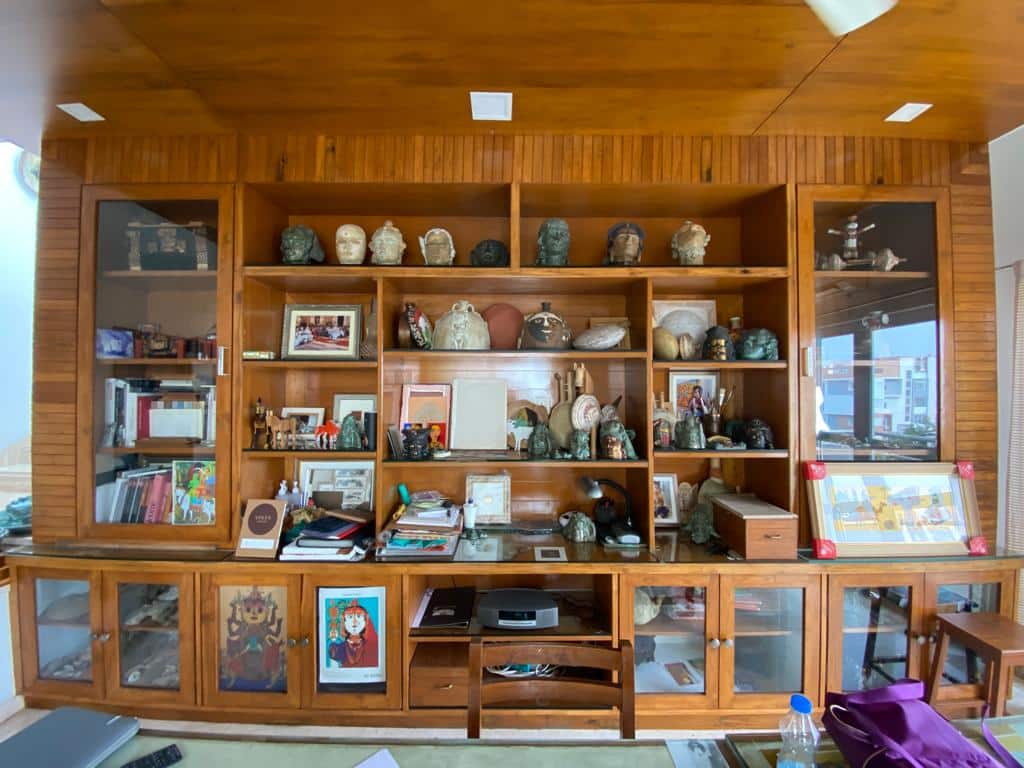
You have worked with so many mediums over the years. Which is your most favorite? And why?
My most favorite is definitely printmaking. My first love was etching, which came very naturally. And when you think of the word etching itself, it is so sensitive, so sensuous. I feel that medium was born for me. My drawing is very good, and when I etch my drawing, it’s so beautiful.
With mediums, I play like a child in my village — when I was young, I was good at working with clay, anything that came across me. Some of these things have brought me to the state of my mind, my understanding, my art, the survival process. There is only one sutra – principle – as a creative person, you have to be a ‘Zinda-dil’ person. Skill, luck, articulation – nothing will help.
So that is your strength.
You can call it a boon. But your own devotion, ‘tapasya’ is important. You have to cultivate it.
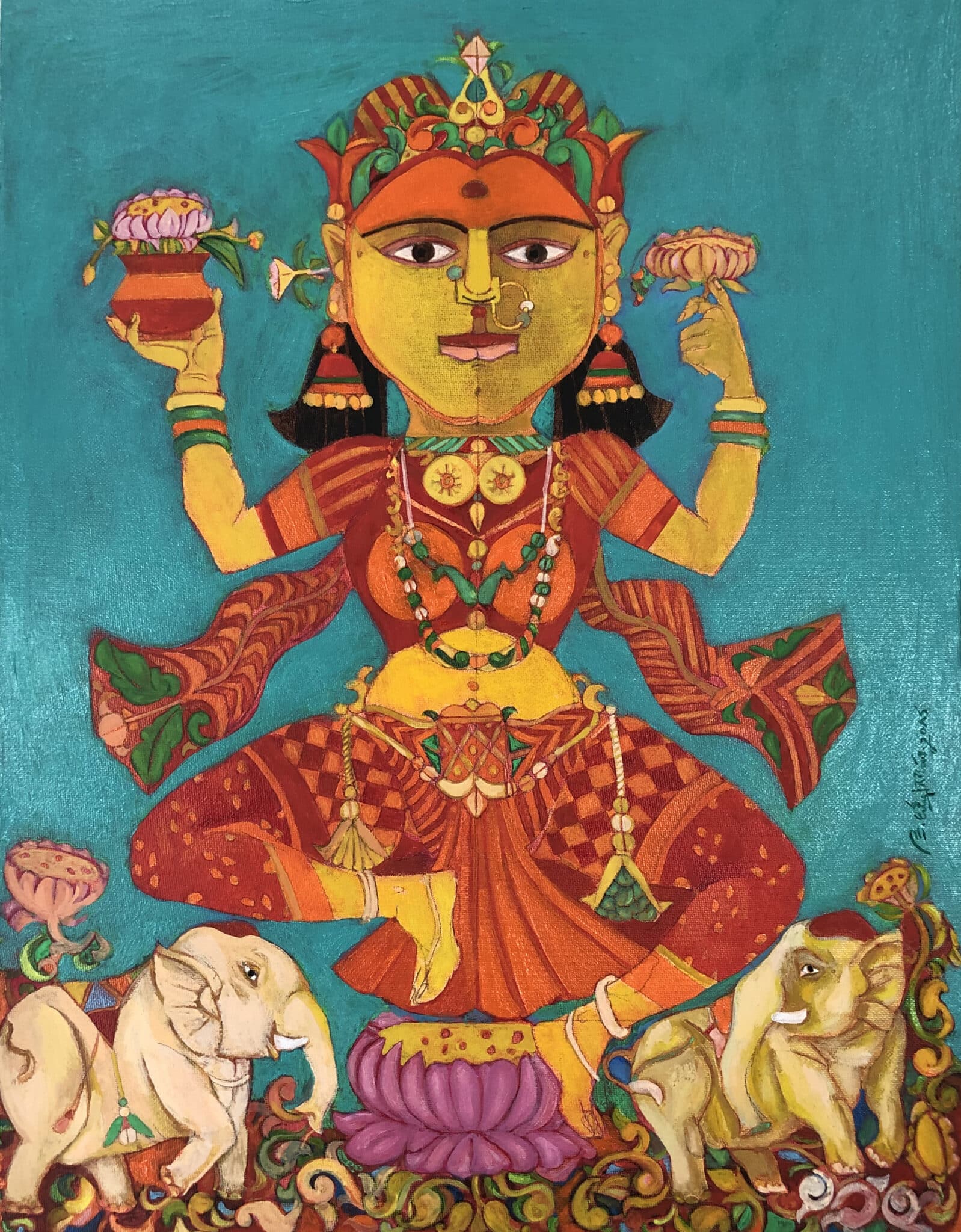
Thank you so much, Laxmaji. It is always a pleasure chatting with you.
I hope you enjoyed this insight into the incredible life and philosophy of Mr. Laxma Goud. To view our collection of paintings by leading contemporary Indian artist Laxma Goud, please visit https://laasyaart.com/laxma-goud/. If you would like to make an appointment to see these works in person at our Indian art gallery in Palo Alto, please reach out at info@laasyaart.com or +1 650-770-9088.
— Sonia Patwardhan

Leave a Reply
You must be logged in to post a comment.